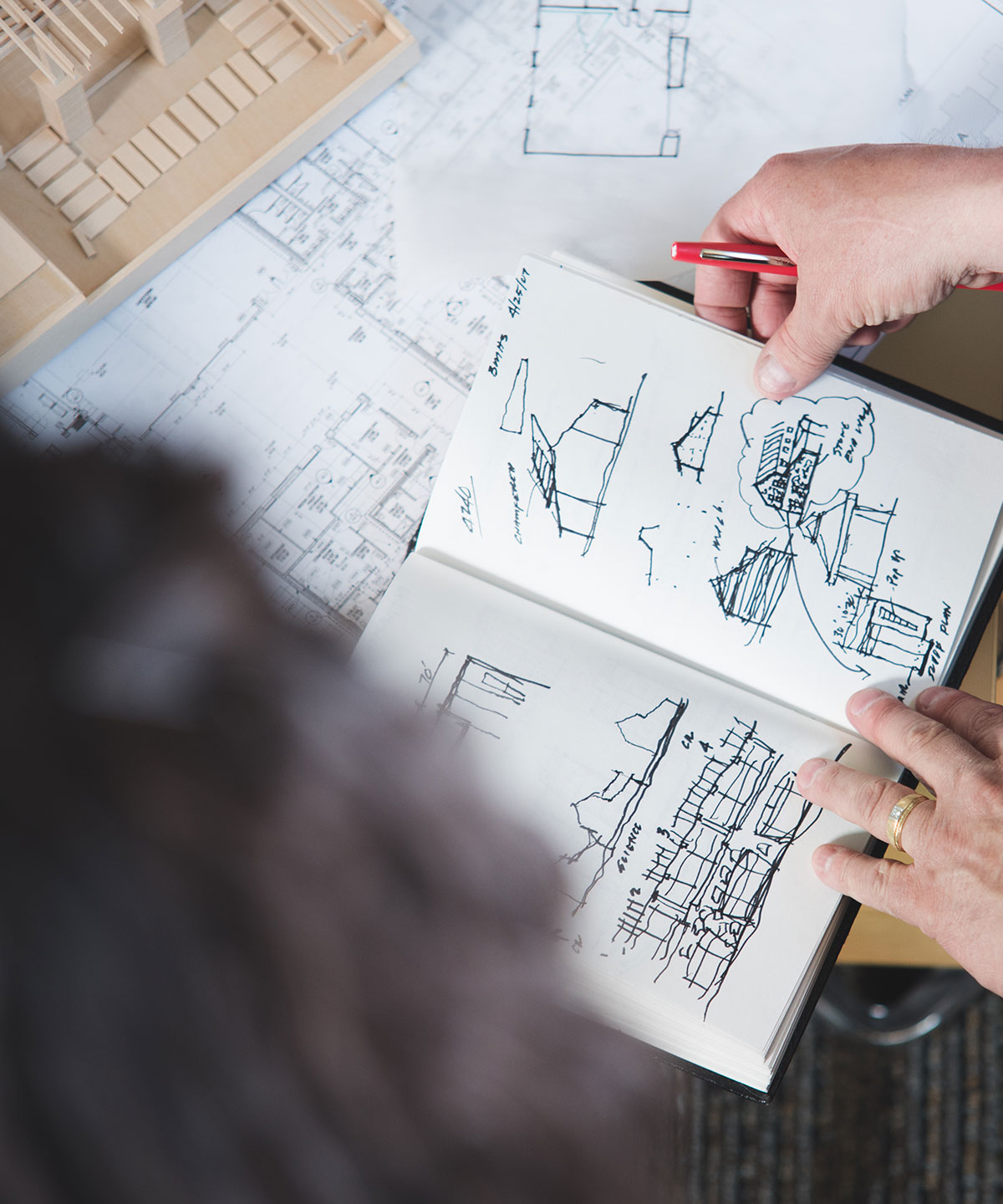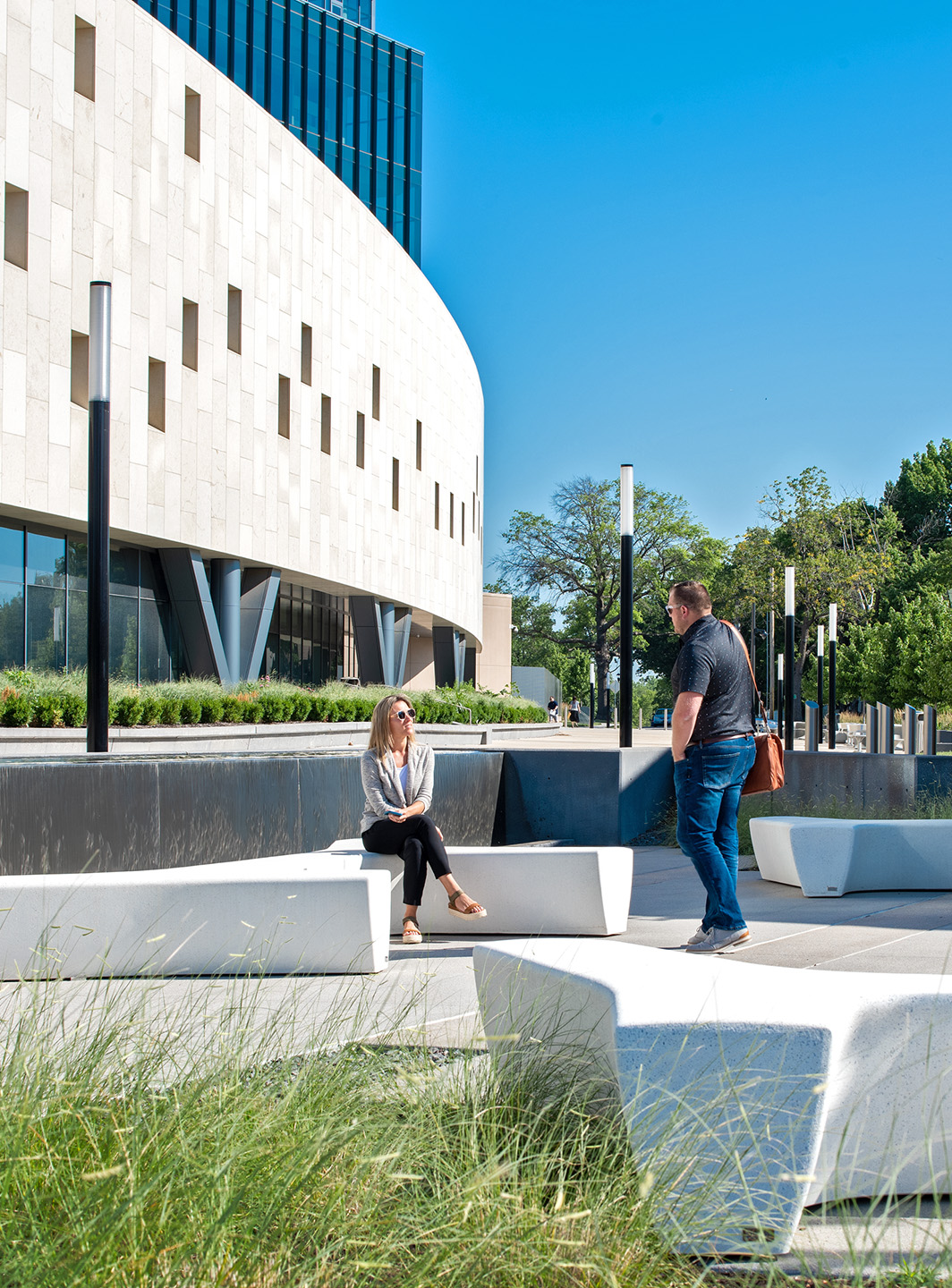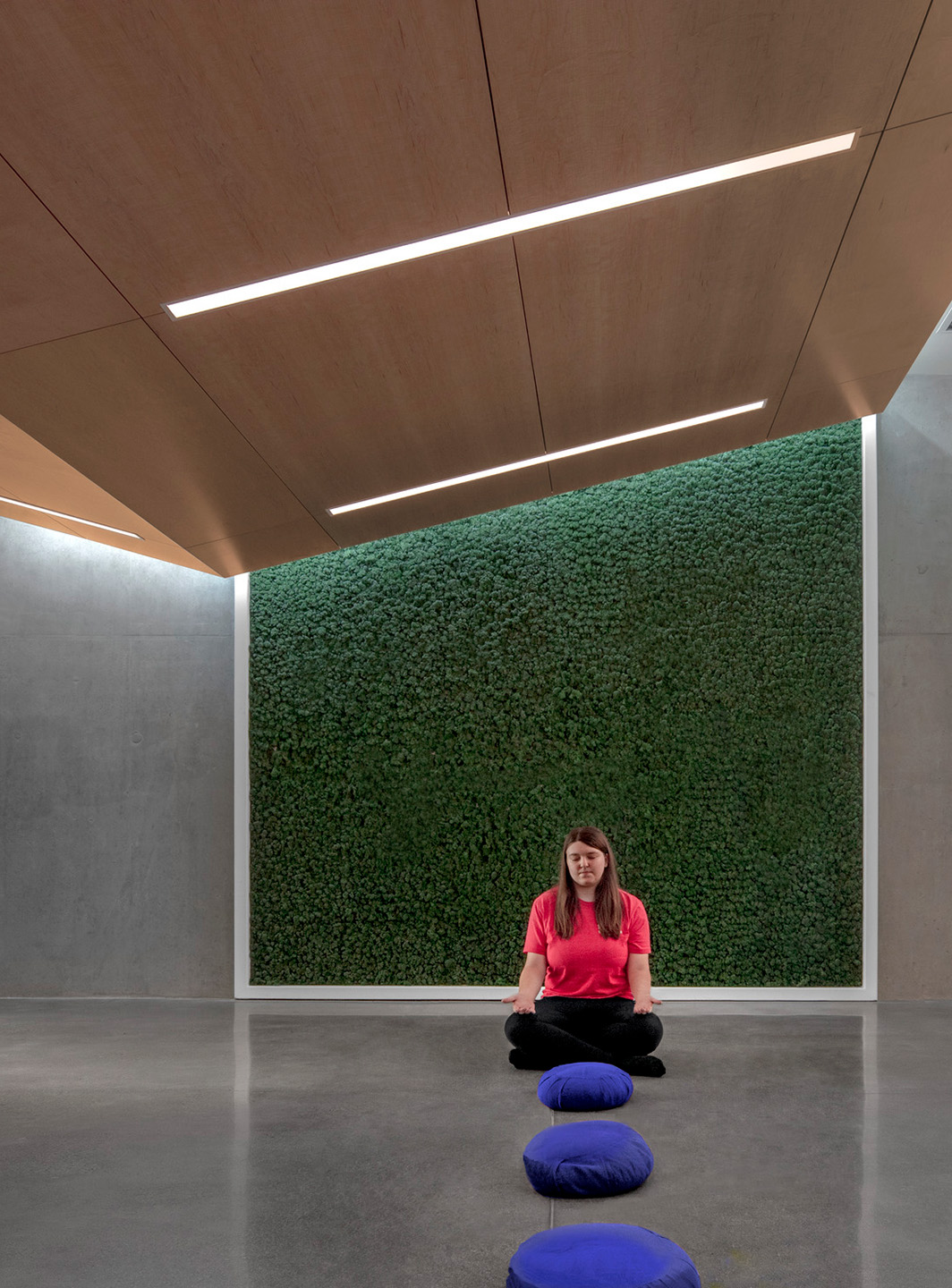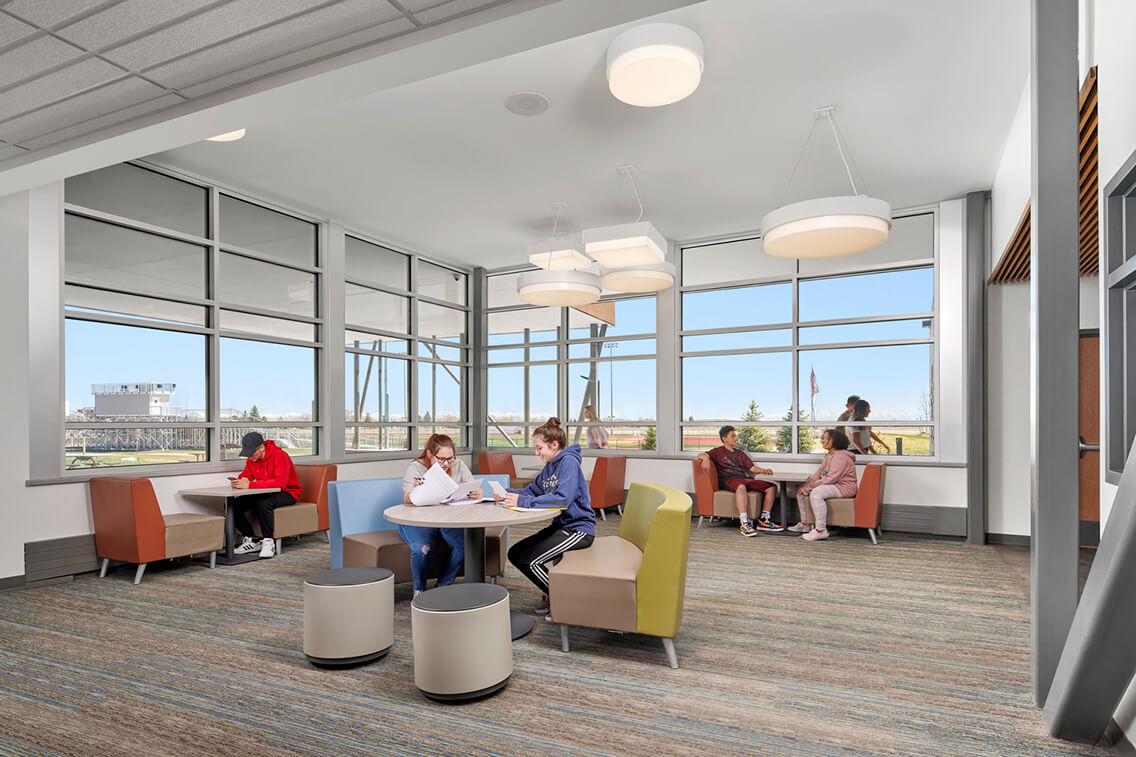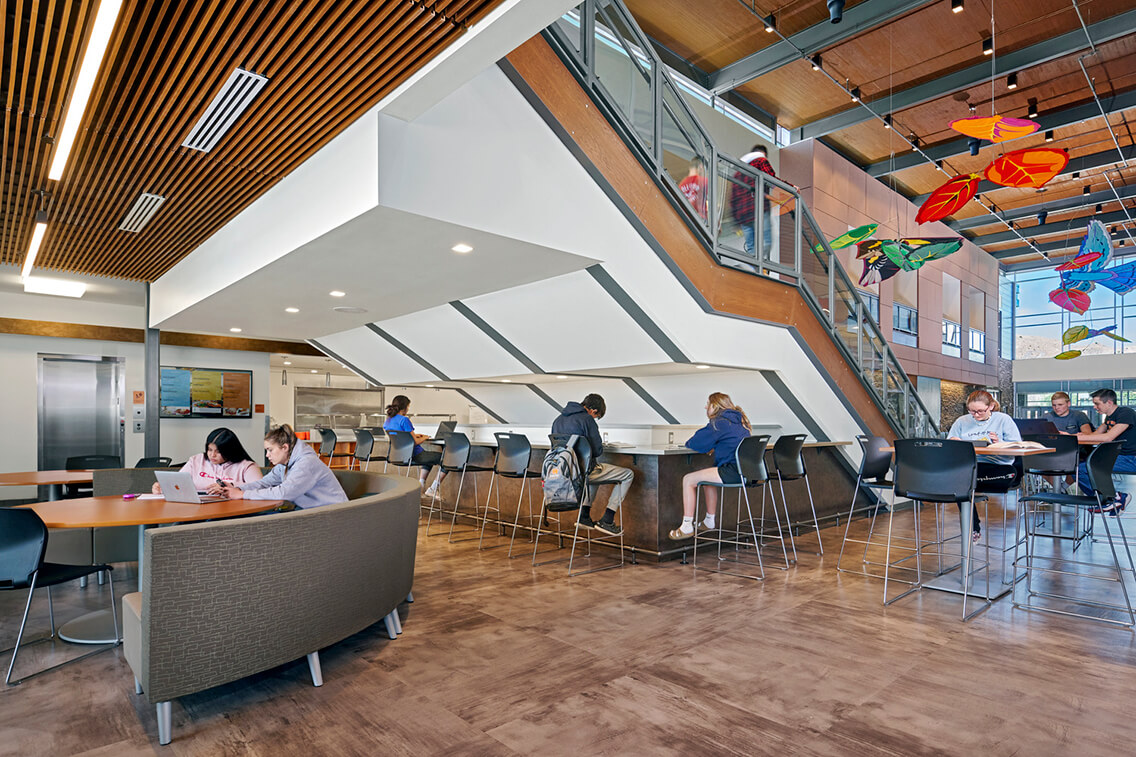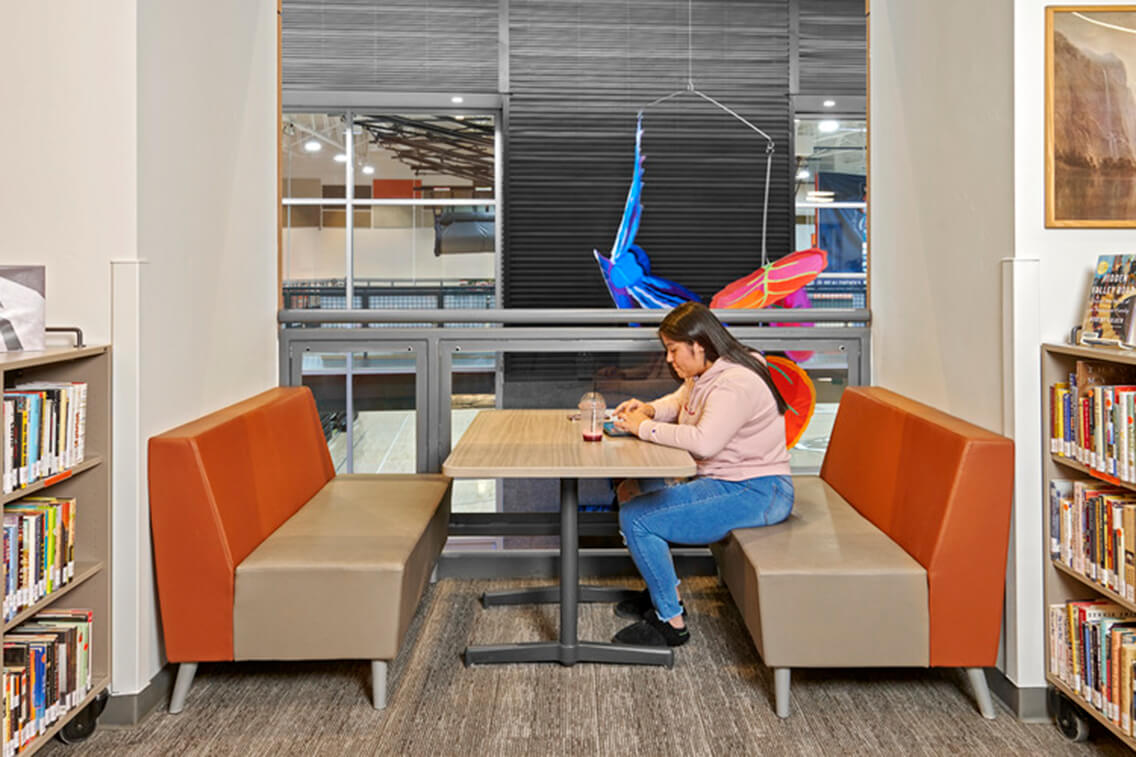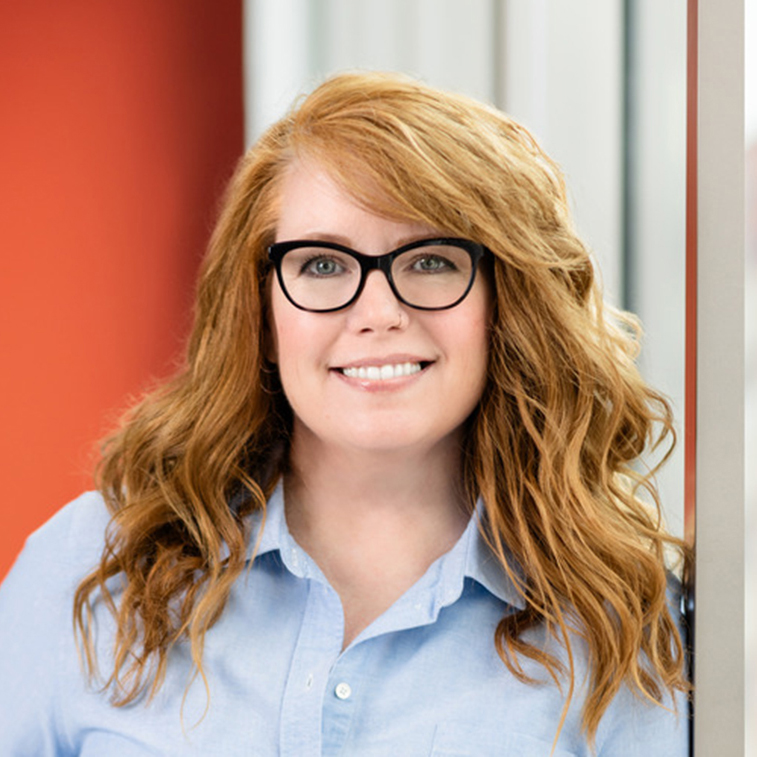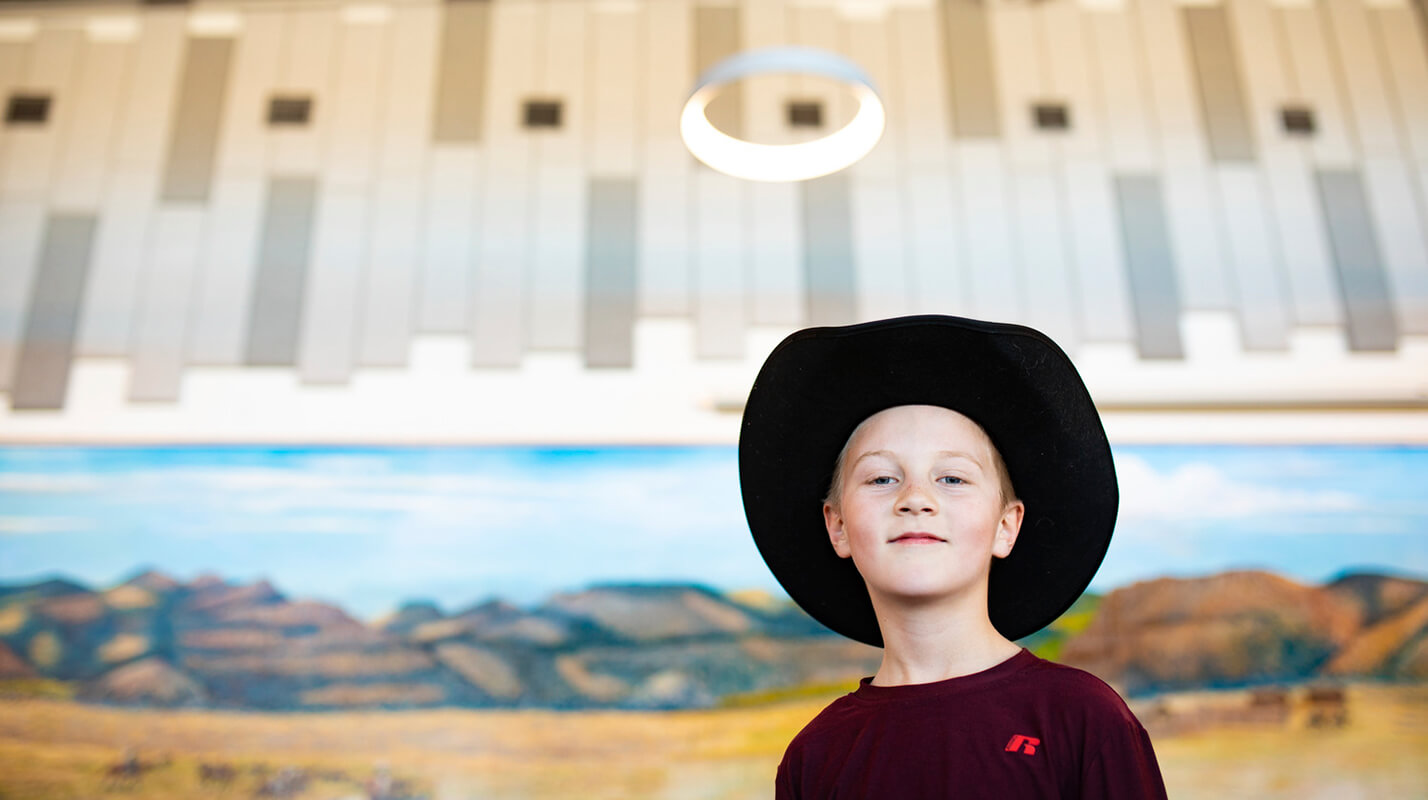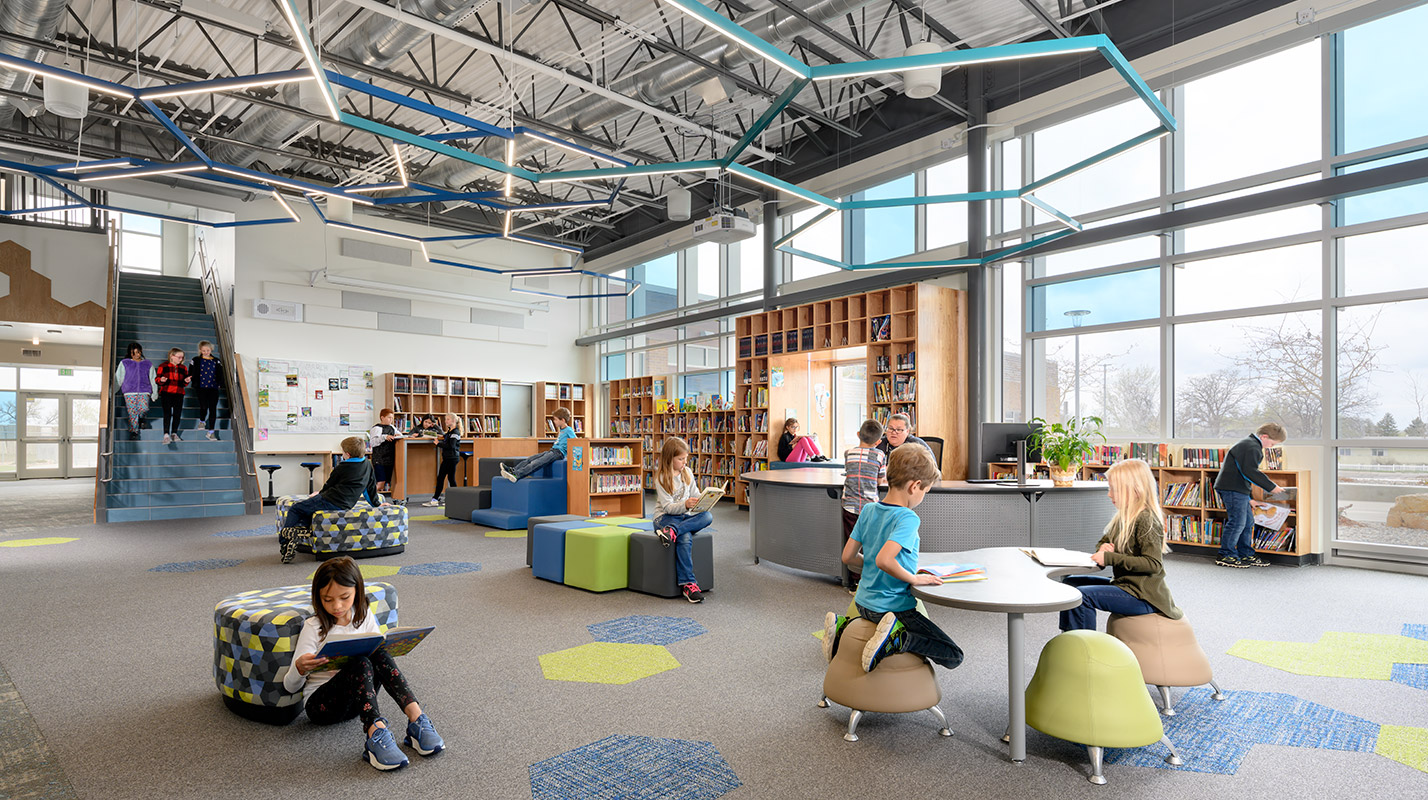Q&A with Upper Rio Grande K-12 School Architect Stephanie Evans
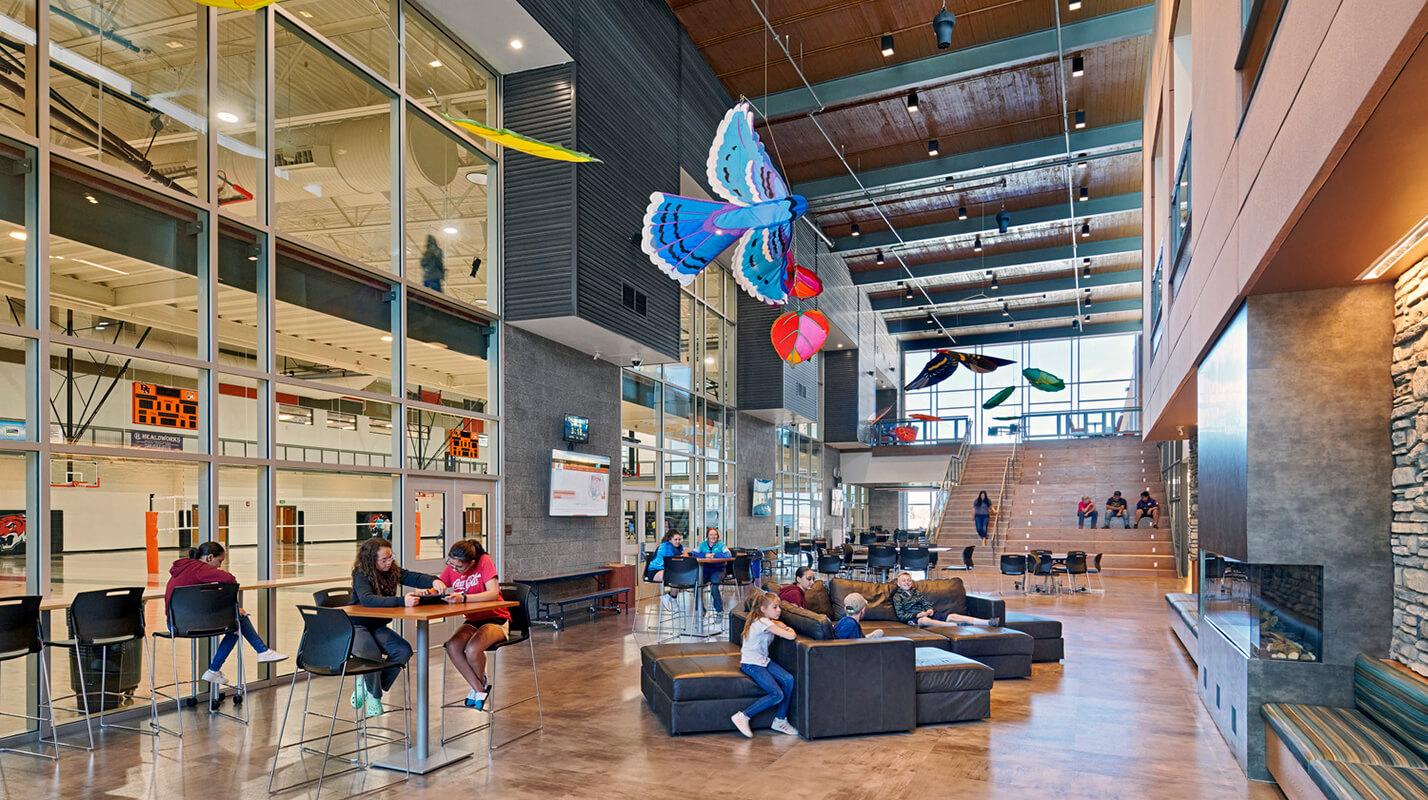
In this Q&A: space flexibility, sustainability, and safety are key
We recently sat down with Stephanie Evans to discuss our Del Norte K-12 project in Colorado. The Upper Rio Grande School District C-7, formally the Del Norte School District, hired Treanor to design a new and consolidated K-12 school on the site of the district’s existing high school football field.
The new K-12 consolidated campus features a 120,000-square-foot school, associated playfields, and a new synthetic turf football and track complex. The building includes separate wings and entrances for elementary, community events, and secondary education. Its core also consists of a two-story commons space with views of the adjacent Sangre de Cristo Mountains.
In our Q&A, Stephanie discusses her favorite features of the new K-12 campus and how the design team tackled a few of the project’s main goals.
What is your favorite feature of the new school?
The main commons area, which was a focus from the very beginning of design. The desire was to have a location that allows visual access to different activities within the same space, provide a unifying area for the elementary school and junior/senior high school students, and a space to support multiple types of community events within the building.
This translated into a multi-function space that serves as the cafeteria, lobby for the auditorium and gymnasium, an extension of the information commons, and a display space for student achievement. Transparency between the main commons, gymnasium, information commons, and the outdoors emphasizes the dynamic nature of this place and its connection to the community.
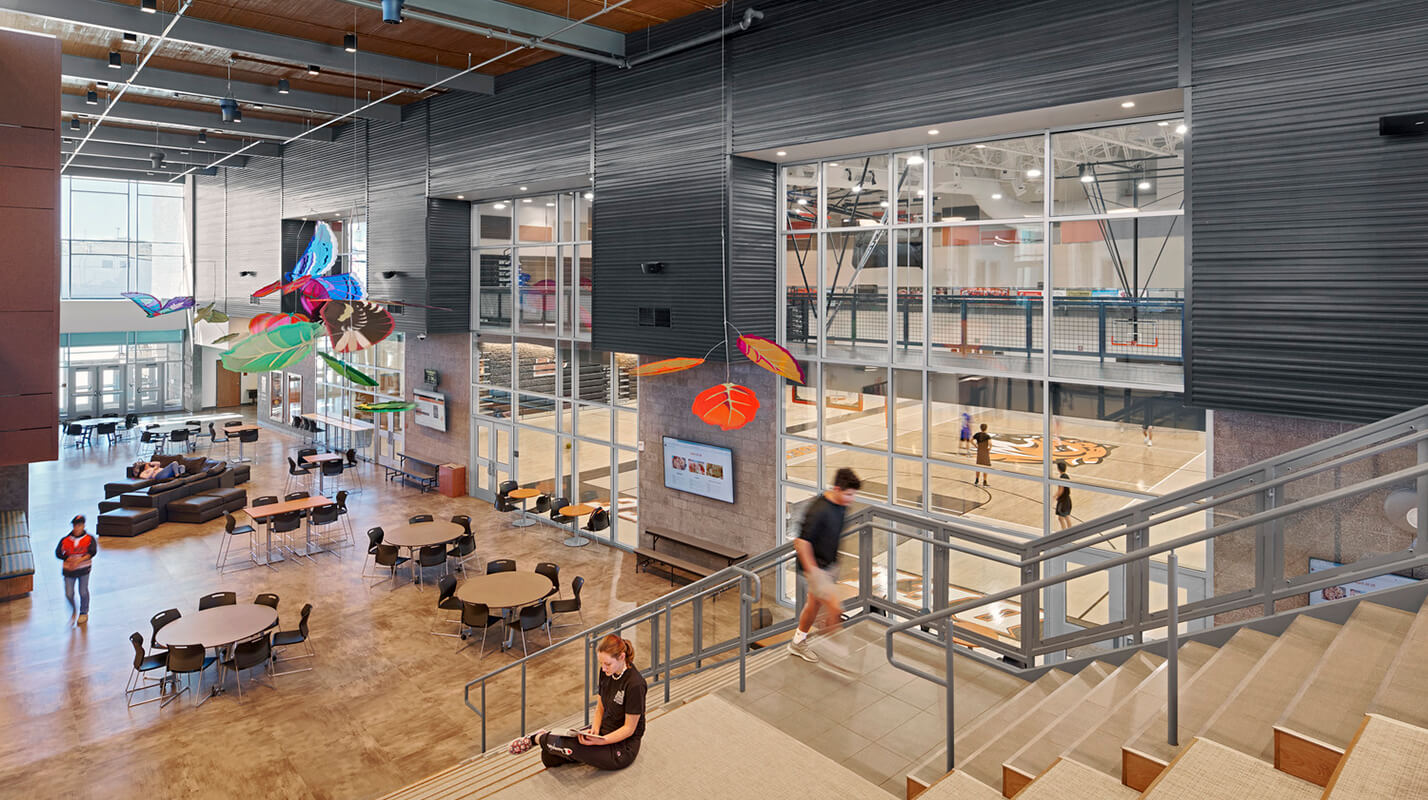
How does the new school support a variety of learning and teaching styles?
We approached design with the philosophy that every place within a school is a learning space. This started within each classroom neighborhood, each with a central team center for collaboration that ties back to each classroom through transparency and folding walls. These centers serve as a flexible extension of the classroom, supporting project-based learning and co-teaching while fostering independent student work.
Multiple breakout spaces are provided within the café commons and information commons areas to support group and individual study for both introverted and extroverted learners. Perch points from the open upper-level space allow a degree of ‘separate togetherness’ while the charge bar under the community stair allows communal dining and conversation. Two different maker/creative spaces are also provided to suit the appropriate grade levels. Additionally, the outdoor environment was developed with multiple gathering spaces and a second-level rooftop patio that accompanies the upper grade level maker space invites students and staff to benefit from fresh air, sunlight, and the beautiful surroundings.
How does the school achieve flexibility and adaptability?
With the new school being built in a rural community with limited funding, the design advisory group coalesced around a core design idea of flexible space. There was a keen understanding that the ability to construct or reconstruct in the future would be limited, and as such, opportunities for flexibility and adaptability that could be afforded at the outset were desired to be included.
Again, starting within the classroom neighborhoods, folding glass walls open to the team centers that allow classroom space to shrink or grow depending on the activity at hand or curriculum employed. Additionally, the dual wing and dual level organization of the facility not only appropriately separates the elementary, junior, and senior high students, but it allows reconfiguration of the entire facility. Should there be growth in the student population to require it, it would be reconfigured to serve solely as a junior/senior high school with separation of each between the two wings.
Even the gymnasiums were not designed as two separate structures, but rather as one large space with a dividing curtain, providing the largest open flexible space that could host not only multi-team sports tournaments, but also the entire student body or a large community event.
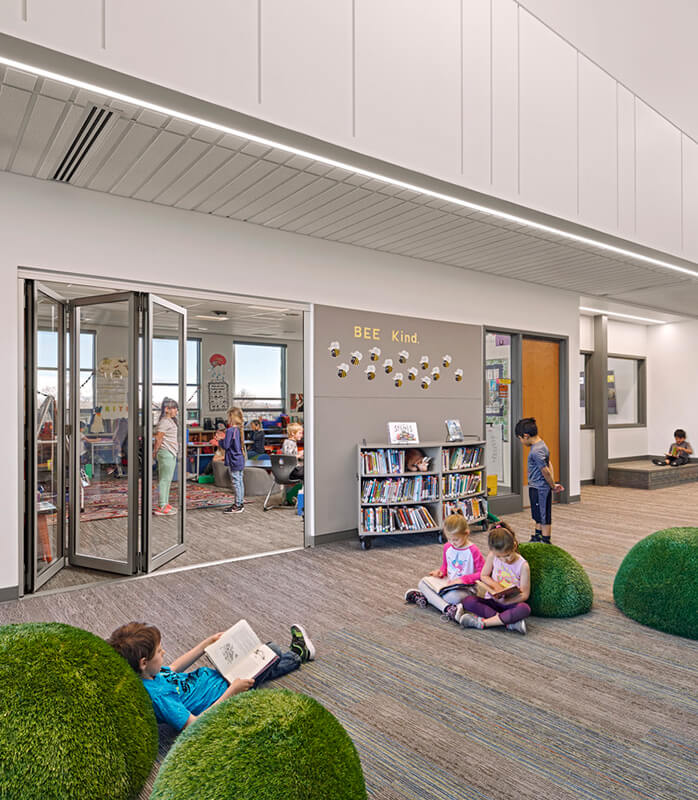
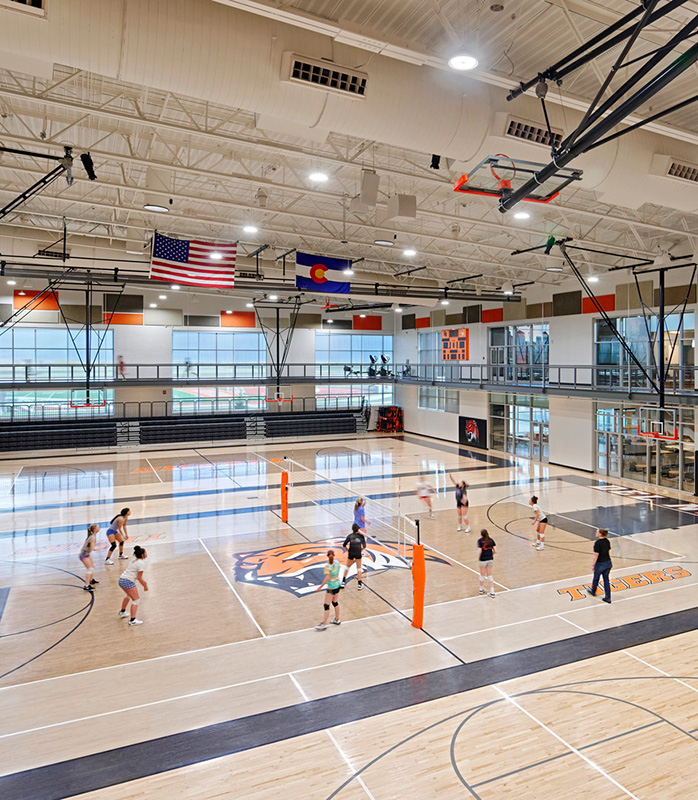
How does the new campus incorporate sustainability?
The project was designed within the framework of the LEED v.4 certification system and achieved LEED Silver. The first design move was diagramming the program to ensure the academic wings were oriented east-west to capitalize on solar exposure. Windows with sunshades and finely tuned glazing dot the academic spaces to work hand-in-hand with the LED lighting and controls, and clerestories that run the full length of the building were used to bring diffuse daylighting deep into the core activity spaces.
The building envelope was then crafted to exceed code requirements in a push to maximize passive measures for energy efficiency, decreasing the burden on the high efficiency mechanical systems. Overall, the project realized a 40% energy cost savings relative to ASHRAE 90.1-2010 baseline.
But this school design was about more than just earning certification points. It was about the creation of learning spaces—inside and out—that acknowledges the incredibly positive impact of daylighting, temperature control, and connection to the outdoors on learning outcomes. It was to ensure a safe and secure school environment that allows students and staff to focus on education. Large and small spaces throughout allow everyone to find their go-to spot, giving agency and choice to all. The building is also meant to be a community anchor that celebrates what it means to be from Del Norte, encouraging pride in oneself and one’s community.
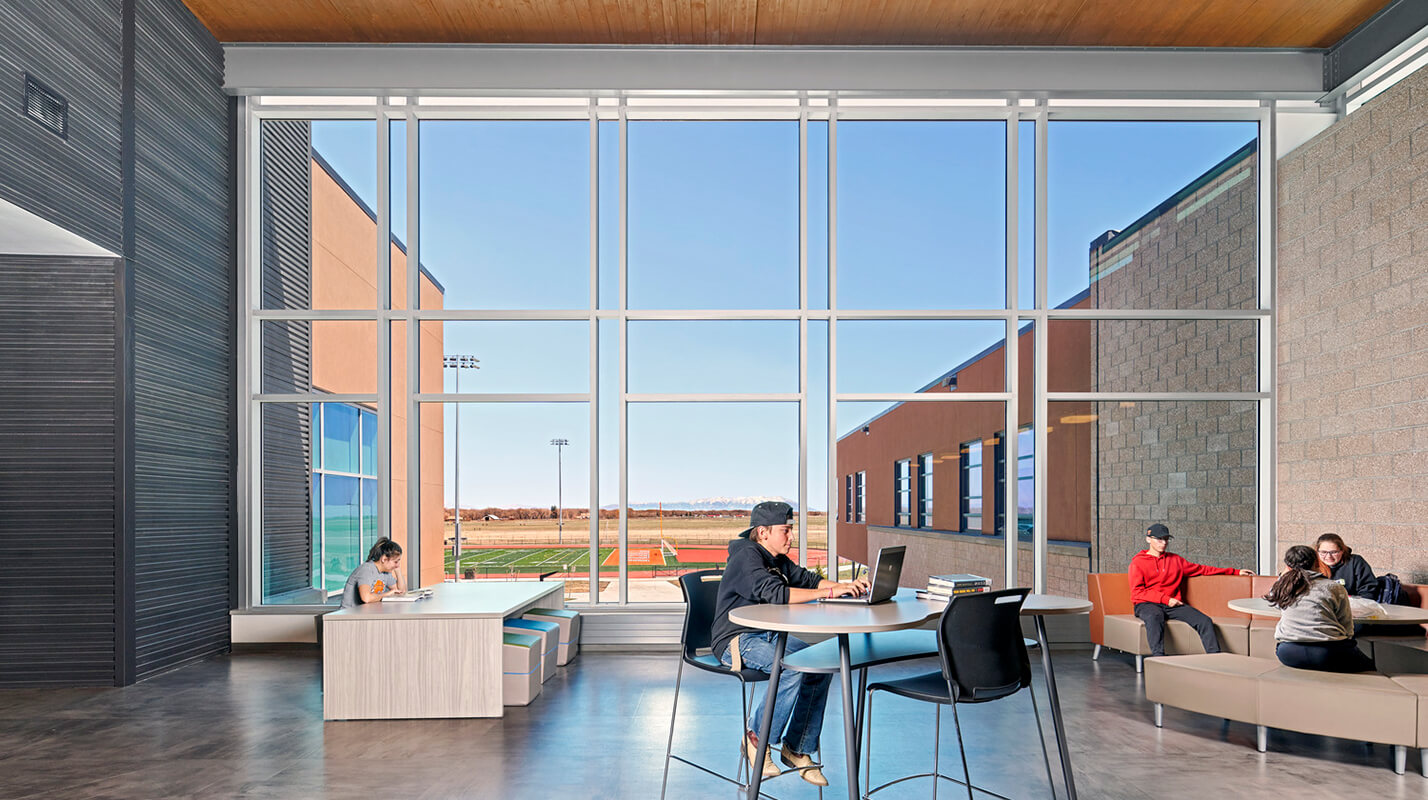
What are the safety and security features of the new school?
As with any new school design, safety and security is a primary priority. The school district wanted to provide as much passive security as possible throughout the school and site that not only addresses exterior threats but also reduces the potential for bullying within the school. This was primarily achieved through comprehensive integration of natural surveillance by the intentional use of windows (inside and out) to provide unobstructed sight lines, fencing that did not obscure views, and the three separate administration office areas facing out to the full public zone as well as into the academic neighborhoods.
As secondary measures, the entry vestibules and perimeter exterior doors feature security glazing, and security cameras capture the full perimeter of the facility. Position monitors are stationed at all exterior doors, interior cameras are provided in all public spaces, and all interior and exterior doors feature an electronic access system to prevent misappropriation of keys to the facility.
Have questions for Stephanie? Reach out and share your thoughts. Learn more about the Del Norte K-12 Campus, and more schools Stephanie and our Education team have worked on.
Authors
Stay on the leading edge
Stay up to date on emerging trends, research, hot topics, and more delivered conveniently to your inbox.
"*" indicates required fields
